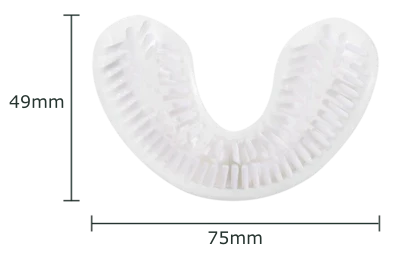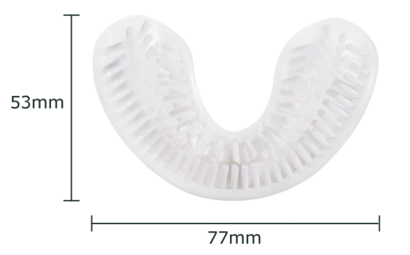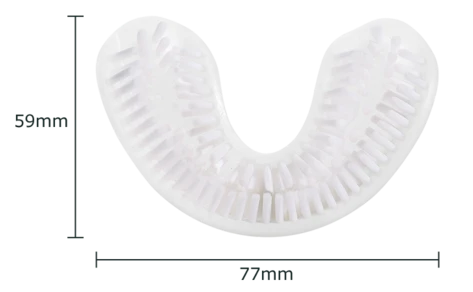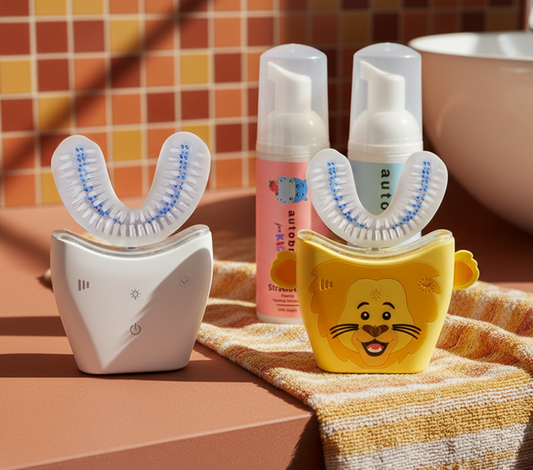
Bleeding Gums: What It Means and When to See a Dentist
Are you seeing blood after brushing your teeth? Are your gums sore, inflamed, or swollen after flossing? These symptoms can be alarming, but don’t worry. You can most likely solve this problem on your own without consulting a dentist. This article will cover the underlying causes of bleeding gums, what you can do to cure them, and when it’s time to go see a professional.
Healthy vs. Unhealthy Gums: How Can You Tell?
Take a look in the mirror and give yourself a big smile. What do your gums look like? If they’re a light shade of pink and form a “C”-shape around your tooth, you’re doing great! If they’re a shade of red, enflamed, or swollen, perhaps it’s time to try some of the tips in this article to get your gums ship-shape again.
Although your gums can seem like a small, insignificant part of your body - they serve a very important purpose! Your gums protect the roots of your teeth from bacteria and plaque buildup. If they’re not taken care of properly, that nasty bacteria can accumulate under your teeth, leading to some pretty serious oral health issues.
Keeping your gums happy and healthy is important to your overall health, and requires a little consistency in your day-to-day routine.

What Causes Gums to Bleed?
There are, quite frankly, many reasons your gums could be bleeding, but it mostly boils down to something irritating them, namely:
Gingivitis
If you’re not brushing or flossing regularly, plaque can build up on your teeth. If left for too long, plaque can turn to a calcified substance known as tartar - which needs to be scraped from your teeth by a dentist. Yuck!
The buildup of plaque and bacteria on your teeth can also lead to gum irritation, which may cause bleeding and inflamed gums. Luckily, this is an early stage of gum disease and can be reversed. However, if gingivitis is left untreated, your gums may start to pull away from your teeth, leaving vulnerable surfaces open for more bacteria growth.
Medication
Certain prescription medications, such as blood thinners, can cause an increase in gum bleeding. If you take blood thinners, your gums may bleed for a longer period of time as your blood isn’t able to clot as easily. Be sure to consult with your doctor or dentist about side effects of certain medications.
If your medication is known to cause adverse effects to your dental health, be sure to let your dentist know so they can provide you with the necessary care to keep your mouth healthy.
Pregnancy
During pregnancy, hormones can have some drastic effects on your entire body - this includes your gums. Pregnancy gingivitis can cause an increase in swelling and bleeding in your gums, as well as an increase in sensitivity. Consult your dentist to find out the best way to care for your teeth during pregnancy.
New Oral Care Routine
If you’re starting to floss or brush more frequently, your gums may need a while to catch up. Don’t give up, as these good habits will lead to better overall oral health down the line. Your gums may bleed or feel irritated for a while after changing your oral care routine, but eventually they’ll bleed less and feel much better.
As a side note, ensure you’re not brushing your teeth too hard. Be gentle and use circular motions when brushing. If you’re still experiencing bleeding and pain in your gums, try using a soft bristled toothbrush.
🦷 Toothy Tip: The AutoBrush Dental Flossers are infused with hydroxyapatite, which is helpful in preventing cavities and even healing existing ones.
Caring for Bleeding Gums

As mentioned before - bleeding gums are usually a sign that you need to make some changes to your oral care routine.
Here’s some tips to keep your gums healthy and happy:
Brush and floss at least twice a day
Preventing plaque buildup on your teeth is one of the most crucial parts of oral hygiene. Since plaque buildup can lead to tooth decay and irritation of your gums, it’s important to remove plaque frequently from your teeth. If your gums are bleeding when brushing or flossing, this doesn’t mean you’re doing something wrong, it means you need to keep at it. Remember, healthy gums don’t bleed when brushed.
Schedule regular dental checkups
Your dentist has tools that you don’t, and they can clean your teeth thoroughly to ensure spots you may have missed aren’t building up loads of plaque or tartar. Your dentist can also answer any questions you may have and point you in the right direction if your gums are bleeding.
Steer clear of tobacco
Tobacco, whether smoked or chewed, can have serious adverse effects on your oral health. The use of tobacco can destroy your teeth and gums and lead to irreversible tooth decay.
Be conscious of what you eat
Foods that are high in sugar or starch can feed that yucky bacteria on your teeth, leading to more problems for your gums. Try eating healthier foods, plenty of vegetables, and limit snacking throughout the day.
When to See Your Dentist

When it doubt - it never hurts to go see your dentist. After all, it’s their job to help you keep yours and your kiddo’s teeth and gums as healthy as possible. They can give you tips on what you might need to improve, and can perform thorough cleanings on your teeth.
Here are some signs to watch out for that may warrant a visit to your dentist:
- Gums that are sensitive to temperature, whether hot or cold
- Swollen, red gums
- Gums that are beginning to separate from your teeth, leaving vulnerable surface areas exposed
- Changes in teeth alignment
- Loose adult teeth
- Frequent bad breath
Final Thoughts…
It’s important to be aware of your oral health. Catching the earliest signs of gum disease will greatly help to reverse any damage done, and visiting a dentist early on will do wonders for your oral health.
Gum disease can have serious ramifications for the rest of your body. It’s often a serious indicator of extreme underlying health conditions, so please keep that in mind the next time you see blood on your floss.












